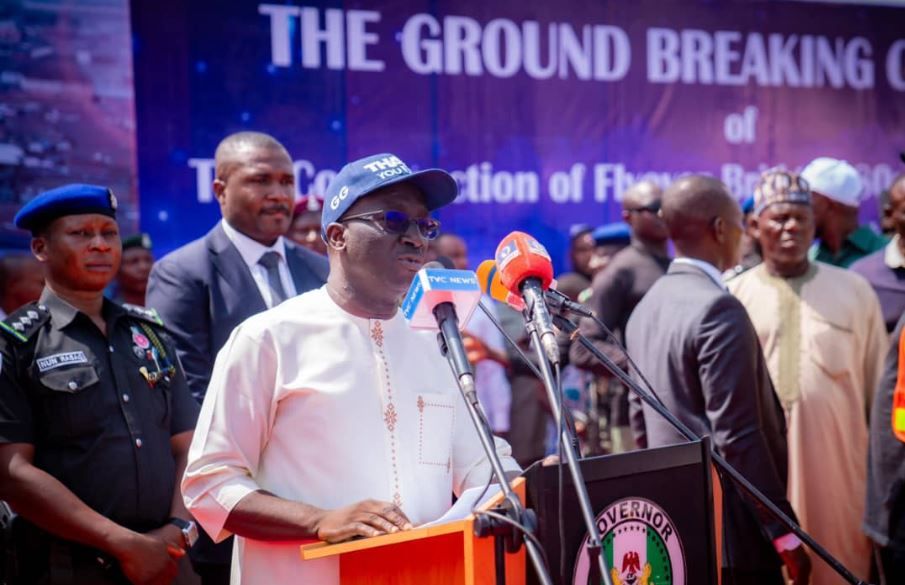General
Flyover Construction By Monday Okpebholo: A Miracle or Just Another Political Stunt?
Edo State governor, Governor Monday Okpebholo, recently had a groundbreaking ceremony to announce the start of a flyover construction project at Ramat Park axis in Benin City. This comes just weeks after he took office in Edo State. The timing has raised questions and sparked debate.
For those familiar with the complexities of urban infrastructure projects, the timing of this announcement seems more than a little suspicious.
-
READ ALSO: How Edo Finally Became Lagos!
After all, constructing a flyover involves a series of lengthy and meticulous steps. Governor Okpebholo’s administration appears to have skipped some of these steps in a rush to impress the people of Edo State.
So, what is really going on here? Is this a genuine attempt to ease Benin’s traffic woes, or just a well-timed political stunt to win hearts and minds?

The Not-So-Rapid Process of Building a Flyover
1. Feasibility Study and Initial Planning
Before starting the construction of a flyover, a government must conduct a detailed traffic analysis to determine the need for a flyover. This includes identifying traffic congestion hotspots and projecting future traffic growth.
Next, they need to conduct a site survey to assess geographical and structural conditions. This involves checking the land, soil, and current infrastructure. Can you imagine the logistics required to test soil, assess existing infrastructure, and study environmental impacts all within a mere two weeks?
The government must also check if the project is financially viable. They need to do a cost-benefit analysis. Would you trust a government that is rolling out heavy machinery after just two weeks of office without any indication of this critical work being done?

2. Government Approval and Stakeholder Engagement
Once the studies are done (if they were done at all), the project must be approved by regulatory bodies like the Ministry of Works and Transport. Not to mention engaging with local communities, business owners, and other stakeholders to ensure that the project doesn’t disrupt daily life in the area.
And of course, there is the Environmental Impact Assessment (EIA). This is a step that can take months, especially in a busy city like Benin, to identify and mitigate any ecological issues.
If this flyover project is happening this quickly, it seems like someone skipped all these important steps. But don’t worry—heavy machinery is already on-site, so it must be legit, right?
3. Design and Engineering
Now comes the tricky part: the actual design and engineering of the flyover. Detailed plans need to be made, considering everything from safety standards to aesthetics.
Utility mapping must also be done to identify and relocate any infrastructure, such as water pipes or electrical cables. This isn’t a job that can be handled in a few days.
But, lo and behold, a Chinese contractor has already arrived with graders and bulldozers. So, if you’re thinking about blueprints and engineering specifications, you’re probably not going to see those for a while.
4. Budgeting and Funding
To build a flyover, the state needs a clear budget, including funds for materials, labour, and contingencies. More importantly, they need to secure funding, whether through state allocations, Public-Private Partnerships (PPPs), or loans.
While we’re not privy to the budget, the announcement of the project two weeks into office leaves one wondering: where exactly did the funds come from?

The Contractor Who Showed Up Early: CCECC
Here is where things get interesting. The contractor selected to build the flyover is CCECC, a Chinese construction company. And while it is perfectly fine for foreign contractors to be involved in Nigerian infrastructure projects, there is one minor detail that raises concerns: CCECC wasn’t selected through any public bidding process.
In a normal world, governments are required to advertise contracts and allow companies to bid on projects in a competitive, transparent process. But not in Edo State, it seems. CCECC is already on-site with its heavy machinery, so the question remains: how did they get the job?
This is a textbook example of how due process is skipped for political convenience. The fact that no bidding process was advertised suggests that the decision to hire CCECC was made behind closed doors, without any transparency or accountability. Was it a sweetheart deal? Who knows. But we are left with a lot of questions and very few answers.
A Political Play or a Genuine Infrastructure Development?
So, why this rush? Why announce the flyover project barely two weeks into the new administration, even though the necessary processes have clearly been skipped or hurriedly fast-tracked?
Let’s be honest: it’s more than likely an attempt to score some quick political points.
Benin City has long struggled with traffic congestion, and a flyover sounds like a great solution. But let’s not kid ourselves—this isn’t about solving Benin’s traffic problems. This is about Governor Okpebholo trying to create a legacy early in his administration, all while the clock is ticking on his political capital.
By rolling in the heavy machinery and making bold announcements, he’s trying to convince the people that he’s a man of action. However, the process before the actual construction of a flyover takes months or years – but certainly not weeks.
Also, if the government doesn’t follow due process, there is a good chance this project will be another well-meaning yet poorly executed attempt at infrastructure development. The people of Edo State deserve better than political theatre disguised as progress.
Conclusion: A Flyover or a Fast-Track to a Political Crisis?
While the flyover project in Benin is certainly an exciting prospect, the rush to start construction with no feasibility study, no government approval process, and no transparent contractor selection, raises serious questions.
Is this a genuine attempt to alleviate traffic problems in the city, or a desperate political stunt designed to win the hearts of Edo people in the early days of a new government?
Either way, the lack of due process and transparency does not bode well for the future of this project. It also certainly doesn’t inspire confidence in the ability of the current administration to handle large-scale infrastructure development.
For now, we will have to wait and see if this flyover project is a miracle or just another mirage in the world of Nigerian politics.
Discover more from Jojo Naija
Subscribe to get the latest posts sent to your email.












